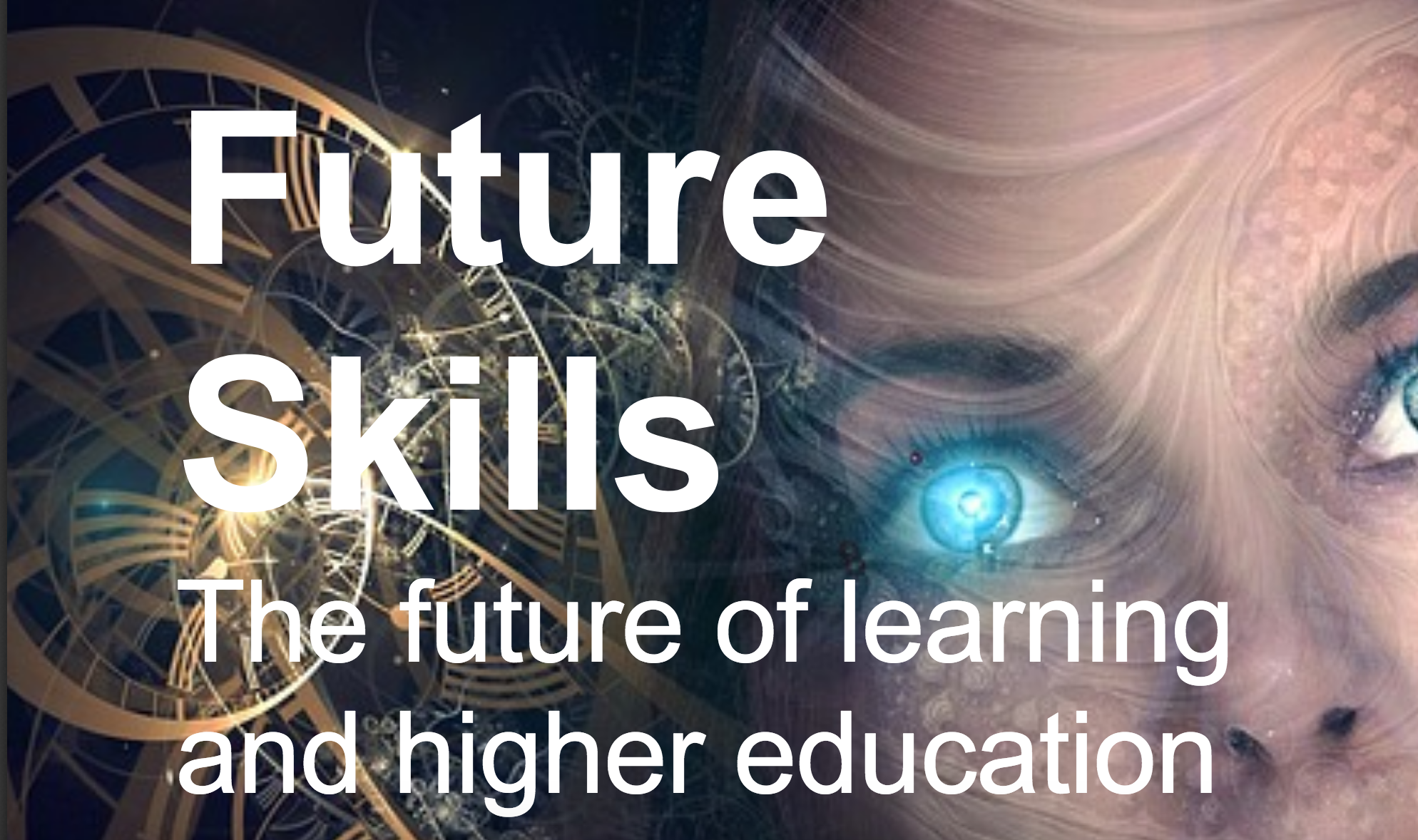Future Skills Report: Review and Summary

How is higher education preparing students for the fundamental changes in the job market? The report “Future Skills-The Future of Learning and Higher education” was published in March 2019 and investigates this question based on an international Delphi survey. The Delphi survey is part of the research initiative on “Future Skills- Future Learning and Future Higher Education,” which started in 2015. This initiative includes research on learning and change on organizations pathways to the future, their conceptions of the future workplace and the definitions of futures skills and involves data and methodological triangulation in three modules, which build on each other. This post will include a brief overview of the key findings of the report.
The New Skills full report can be found in LearnTechLib.
The report is part of an overarching research project on “next skills” and collates opinions from an international experts’ panel of almost 50 experts from higher education and business. Experts were asked about the degree of relevance, the time frame of adoption for future skills, future higher education scenarios and the driving pillars of change.
Future Skills
Future skills is broadly defined as the ability to act successfully on a complex problem in a future unknown context of action. This can be perceived by employers and supervisors as performance. The future skills model divides future skills into three interrelated dimension: the subjective dimension, the object dimension, and the social dimension. Within these three dimensions, sixteen skill profiles have been defined. The subjective dimension relates to an individuals’ subjective, personal abilities to learn, adapt and develop in order to improve their opportunities to productively participate in the future workplace and actively shape the future working environment. This dimension contains seven future skill profiles. These are: (1) autonomy, (2) self-initiative, (3) self-management, (4) need/motivation for achievement, (5) personal agility, (6) autonomous learning competence, and (7) self-efficacy. The object dimension relates to an individual’s ability to act self-organized in relation to an object, a task or a certain subject matter related issue. It involves a pursuit of knowledge that results in professionalism and not into knowledge expertise. This dimension contains five future skill profiles. These are: (1) agility, (2) creativity, (3) tolerance for ambiguity, (4) digital literacy, and (5) ability to reflect. The social dimension relates to an individual’s ability to act self-organized in relation to the society and organizational environment. This dimension contains four future skill profiles. These are: (1) sense-making, (2) future mindset, (3) cooperation skills, and (4) communication competence.
Future Learning
Future learning focuses on the idea that higher education institutions in the future will provide a learning experience which is fundamentally different than the model of today. The dimensions of future learning in higher education will include changes to structural aspects and pedagogical design of academic learning. Structural aspects include: learning as institutional patchwork instead of the current widest-spread one-institutional-model of today, and will be supported by more elaborated credit transfer structures. Pedagogical design of academic learning aspects include: changing practices of assessment, focus on future skills with knowledge playing an enabling role in interactive socio-constructive learning environments. Generally, experts estimate structural changes to become relevant much later than changes related to academic learning design.
Drivers of Change in Higher Education
This report describes four key drivers of change in higher education. There are two content and curriculum related drivers and two organization-structure related drivers. The first content and curriculum related driver is: An emerging focus on future skills radically changes the current definition of graduate attributes in higher education. A focus on future skills replaces a narrow focus on academic and knowledge acquisition. The first organization-structure related driver is: Higher education increasingly becomes a multi-institutional study experience. The report estimates that higher education is moving from a one-institution model to a multi-institution model. The second content and curriculum related driver is: Students build their own personalized curriculum. The curriculum of academic programs is moving from a predefined structure to a more flexible, personalized model. The second organization-structure related driver is: Higher education institutions turn towards providing offerings for lifelong higher learning services.
Four Scenarios for Future Higher Education
This report included four scenarios for future higher education. Three out of four scenarios appear to have a time of adoption of more than 10 years from today, according to experts. One scenario is the ‘future skill’ university scenario, which suggests that higher education institutions would leave the current model that focuses on knowledge acquisition. Instead, higher education would focus on future skill development, including complex problem solving, dealing with uncertainty, etc. The second scenario is the networked university. This scenario views higher education as a networked study experience, and will include students receiving education from multiple institutions. The standard higher education structure would shift from a one-institution model to a multi-institutional model. The third scenario is the “My-University” scenario, which describes higher education institutions as spaces where students can build their own curricula based on their personal interests. Students would actively collaborate with professors, teachers, and advisors in curriculum building. The fourth scenario is the lifelong higher learning scenario, where seamless lifelong higher learning would be as important as initial higher education. Students would choose their modules based on personal skill needs and competence demands with high autonomy throughout their lifetime.
Read More
Ehlers, U.D. & Kellermann, S.A. (2019). Future Skills: The future of learning and higher education. Karlsruhe. Retrieved May 5, 2019 from https://www.learntechlib.org/p/208249/.

Dr. Zaher A. Mohamed
June 8, 2019 at 8:17 am
It i an excellent article especially with the notion of shifting from a one-institution model to a multi-institutional model. Also, emphasizing on contributing students to build their own personalized curriculum.
better writing
October 1, 2019 at 3:05 am
Thank you for helping out, good info.